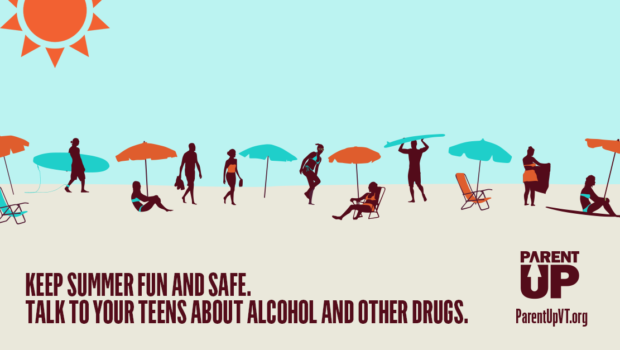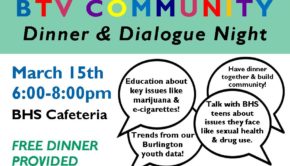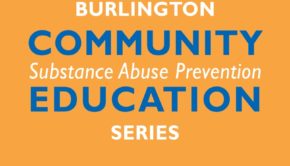Marijuana: Clearing the Haze & Breaking Down the Myths
We’ve all heard them. We may even have said them or believed many of them to be true.
“Everyone is doing it.”
“It’s natural, so of course it’s safe.”
“But it is used as medicine, so it must be safe.”
“I smoked it when I was young and I’m fine.”
“I drive better when I’m stoned”
“Marijuana is not addictive.”
The decriminalization and conversations about legalization in Vermont have left many of us, including our youth, confused about what’s true. Even if you are relatively certain that your child isn’t using or impacted by someone else’s marijuana use, it is important you know the facts. Families must learn more about the marijuana available today so we can increase the perception of harm for our youth and young adults and help them remain substance free during this time when their brains are still developing. Research has shown time and again that parents’ values are the #1 reason young people decide not to use drugs and alcohol. Be a credible source of information and start talking to your kids about marijuana and other drugs early and often.
Breaking Down the Myths
“Everyone is doing it” — The GOOD NEWS is that “everyone” is NOT is doing it. In fact, the 2015 Youth Risk Behavior Survey results tell us that 21% of high school teens and 3% of middle schoolers in Chittenden County smoked marijuana in the last 30 days. Which means that 79% of high school teens in our area and 97% of middle school teens are not using!
“It’s not addictive.” — Because the physiological effects of marijuana withdrawal can often appear mild, people sometime incorrectly conclude the marijuana is not addictive. Marijuana, just like any other drug, can lead to addiction. It affects the brain’s reward system in the same way as all other drugs of addiction – and the likelihood of addiction increases considerably for those who start young. Among those teens who do use marijuana by age 15, 1 out of 6 become addicted. Among heavy users that number rises to 1 in 4. People who begin using marijuana before the age of 18 are 4 to 7 times more likely to develop a marijuana use disorder than adults. It is important to know that today’s marijuana is not the same as what was available even as recently as the early 1990’s. According to the National Institutes on Drug Abuse and testing done by the federal government, the average potency of pot has more than tripled in the past two decades, and now carries a much higher potential for addiction.
“It’s natural, so it must be safe.” — Natural doesn’t mean safe. Lots of beneficial substances are human made (medicines, for example), and lots of harmful ones come straight from the earth. While it comes from a plant, marijuana smoke contains more than 400 chemicals and some studies report 50-70% more cancer causing material in marijuana than in tobacco. Smoking marijuana leads to changes in the brain similar to those caused by cocaine, heroin and alcohol. Many drugs originally come from plants (tobacco, cocaine, alcohol), but we understand now how dangerous they can be. Poison ivy is natural too and we’ve learned to teach people to stay away from it!
“But it is used as medicine, so it must be safe.” — It is important to relay to kids, that while a number of states have passed laws allowing marijuana for medical use, neither the Food and Drug Administration (FDA) or any major medical associations have approved the smoked marijuana plant to treat any diseases. The marijuana plant contains ingredients that could have important medical uses, however, because marijuana is usually smoked into the lungs and has ingredients that can vary from plant to plant, scientists suggest its health risks may outweigh its value as a treatment in this form. Scientists continue to investigate safe ways that patients can use some of the ingredients in the marijuana plant as medicine in pill and spray form and are looking closely at appropriate medical uses to relieve symptoms. We should also remind kids that most prescription drugs when abused can be just as dangerous as drugs that are made illegally. Every medication has some risk for harmful effects, sometimes serious ones. Doctors consider the potential benefits and risks to each patient before prescribing medications and take into account a lot of different factors – personal information, form and use of the drug and the side effects. Teens should be encouraged to only use medications under health care provider supervision.
“I smoked it and I’m fine” — Drugs affect each person differently according to their: biology, previous experience with drugs, how it is used, and the potency. So one person’s experience should not be used to justify another’s use. As stated above, today’s marijuana is not the same as what was available even as recently as the early 1990’s. According to the National Institutes on Drug Abuse, today’s marijuana contains 3 times the THC (the chemical in marijuana that causes the “high”) as compared to that of the early 90’s. Studies suggest potency has increased fivefold since 1960. From approximately 3% THC in 1960 to potency values of up to 30% available in both states that have legalized and illegal marijuana sold today. Nora Volkow, Director of the National Institute on Drug Abuse (NIDA) at the National Institutes of Health, agrees that the higher THC content is driving the increase in marijuana-related emergency room visits in the country over the last several years. “The higher the THC content, the stronger the effects on the brain… the more likely you may end up with toxic reactions – like psychosis. Even the occasional user may end up in the ER. The very significant increase in ER visits – it’s due to THC content being much higher now. It’s not that we’ve increased the number of people taking marijuana.”
“I drive better when I’m stoned” —- The skills you need to drive safely—alertness, concentration, coordination, judgment, and reaction time—are controlled by the parts of your brain affected by THC (the main active ingredient in marijuana that gets people “high”). This means that smoking marijuana seriously increases the likelihood of a car accident. Data from road traffic arrests and fatalities indicate that, after alcohol, marijuana is the most frequently detected psychoactive substance among driving populations. Bottom line: It’s not safe to drive after smoking marijuana or to ride with a driver who has been smoking marijuana.
Setting clear expectations and creating an open avenue for kids to talk with you about these myths are among the most important actions we can take as a community to support teens not to engage in these high risk behaviors. Thank you for doing your part to help educate our community about marijuana!
Vermont Resources for More Information About Marijuana:
The Vermont Department of Health “Marijuana Use in Vermont” web page includes prevalence and treatment data, fact sheets, and additional resources from the Office of National Drug Control Policy, the National Association of State Alcohol and Drug Abuse Directors, and the National Institute on Drug Abuse.
ParentUP is a VT campaign to help educate parents about issues related to drugs and alcohol in VT and how to talk to their teens. Go to: www.parentupvt.org
National Resources for More Information:
National Institute on Drug Use and Health
The Marijuana Report
Parent Further
Speak Now (Colorado Office of Human Health)
Talk. They Hear You







